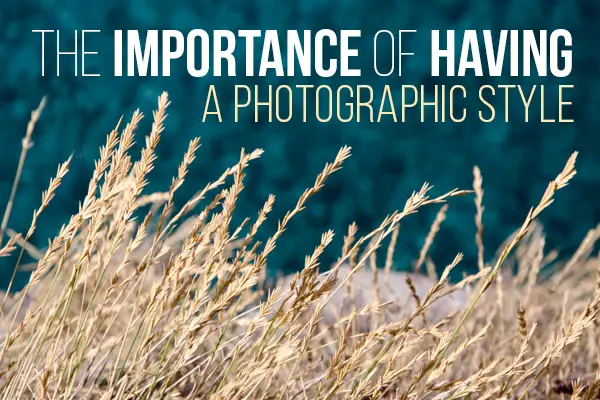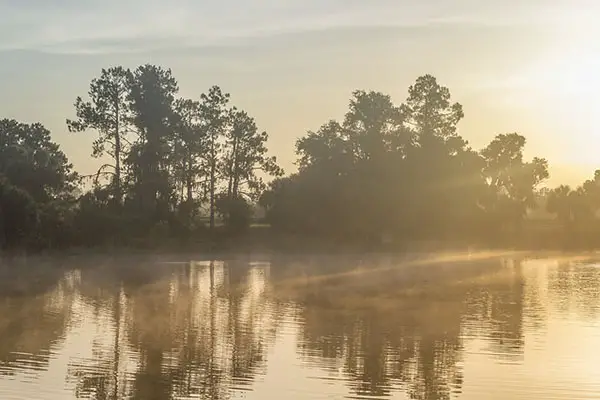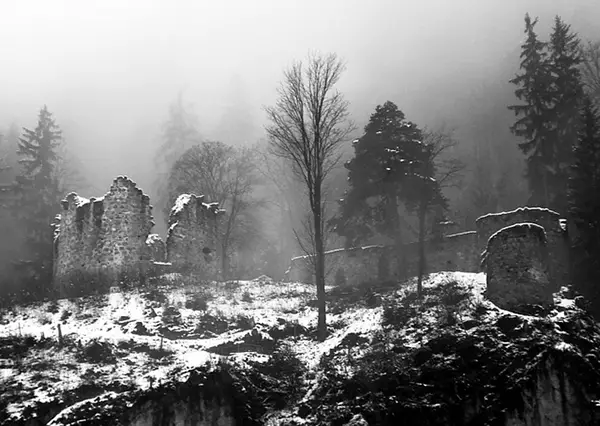Every art form that we as humans enjoy all have a common thread: They all have differing styles that set each apart and make them unique.

Photography is no different. Our art form has countless styles, forms and genres for us to explore. But why is it necessary for us to understand style? The simple answer is having a well–defined style allows us to stand out and be unique, which is necessary in today’s highly competitive photography market.
Some people may consider a style to be a particular category of photography. For our purposes, a style is a look or feel used for a photo or set of photos, while a genre is a branch or category such as landscape or portrait photography.
If we take a look back at some of history’s most influential photographers, we will see that they all had a unique style of their own. Ansel Adams was known for his high–contrast and dramatic black-and-white landscapes, while, today, Peter Lik is known for his vibrantly saturated landscape imagery.

Both of these guys selected landscape photography as their preferred genre; they may have dabbled in other areas of the craft, but are known for their incredible captures of the landforms and environment around us. They had a love for that genre, realized their potential with it, and stayed true to that path.
Style is not limited to a certain form of photography, but also a particular look or feel. So what genres are encompassed by photography? Why is having a well-defined genre and a style of your own important? How does it benefit you as a photographer? Let’s explore all this a bit more.
Photography Genres
We all know a genre in music means a type, such as rock, country or pop. But what does it mean to a photographer?
A genre in photography is a branch or category, such as landscape, portrait, wedding or macro. It is a top-level division that focuses on one primary subject. A landscape photographer, for example, spends most of his time searching out perfect shots of mountains, fields, seascapes, clouds or other natural formations.

Meanwhile, a portrait photographer prefers to focus on photographing people in various environments, whether it be natural (as with a street photographer) or created (such as in a studio or wedding environment).
There are literally dozens of genres defined in photography. Some of the other popular categories include:
- Astrophotography
- Commercial
- Food
- Forensic
- Glamour
- Panoramic
- Photojournalism
- Social Documentary
- Sports
- Street
- Travel
- Underwater
Some genres can meld into styles as well, such as black-and-white; there are photographers who are exclusively known for taking black-and-white photos, but simultaneously, since black-and-white has a very particular look and feel, it can also be a style.
Photography Styles
As we’ve established, a style is the particular look and feel of a photo. It is very subjective and usually not as well-defined as a genre. While styles can be sorted into categories as well, the individual photographer usually molds that style into his own personal approach and vision of a subject or idea.

Common base styles include black-and-white, vintage, lomography, abstract, long-exposure and HDR (High Dynamic Range) photography.
Setting Yourself Apart
Photography is an extremely competitive market and is growing even more so every year. Do a Google search for photographers in your area, and unless you’re in an extremely unpopulated area, you’ll find there is no shortage of people willing to take photos for money.
In order to rise through the ranks and get noticed, something about your work has to be different. Otherwise, the choice a potential client makes comes down to cost. You have to offer them something that the other guys don’t have. Even that is difficult to do nowadays, as every niche and corner of the profession has been explored.
So what to do? Establish an identity. This means having your work known for a particular style or look, usually in a particular branch of photography, and being able to consistently produce that look for all of your clients. To maximize your identity, you’d want to concentrate on a more or less specific genre of photography, as well as incorporating a consistent style within that genre.
The two photos below illustrate using a consistent style throughout your portfolio: The subject matter is similar (landscape photography), and a base tone or feel is present throughout both shots.


Once you’ve done this, you go from being just another photographer lost in the mix to someone who has a strong foundation, being focused and knowledgeable in a particular area of the trade. And potential customers LOVE that.
Keeping up With the Times
Is it enough to just build an identity for yourself? Of course not! Having an identity won’t get you very far if it’s rooted in what was popular 10 years ago. Another important piece of the puzzle involves staying current with style trends and ensuring you’re providing what’s attractive to your potential clients.
Remember how much we all loved HDR (High Dynamic Range) photography a few years ago? Believe it or not, the style that was once all the rage is on the downturn and in a big way. Too many over-the-top examples flooded the niche, proving to be overdone and too unrealistic in many cases.

It may not apply to your standard wedding or portrait photography, but it’s a good example of how popular styles can fall out of grace in a relatively short period of time. Do the research, and stay on top of what people want.
But…Don’t Have a One-Track Mind
Having said all this, while it’s important to embrace your specialty, whether it be black-and-white, vintage portraits, or modern food photography, you must keep one other thought in the back of your mind: Don’t limit yourself.
While having a primary style and genre is ideal, not being familiar and competent with other styles and types is taking a big risk. Be focused, but not at the risk of alienating potential clients. Learn as much as you can, as completely as you can.
What other tips would you give a photographer looking to separate himself from the pack? Do you follow the “focus” model, or do you shoot anything and everything for your customers? You know what to do…leave us a comment below!









The last section “But…Don’t Have a One-Track Mind” is worth all the post.. 😉 It’s
impossible to create a style, you can find it only by errors and trials. Thanks for the post!
Absolutely Ivan! Can’t have a big reward without risking a bit and branching out 🙂 Thanks for reading!